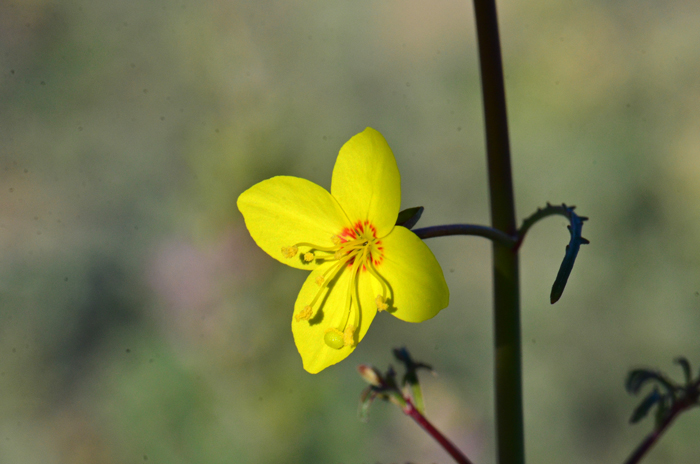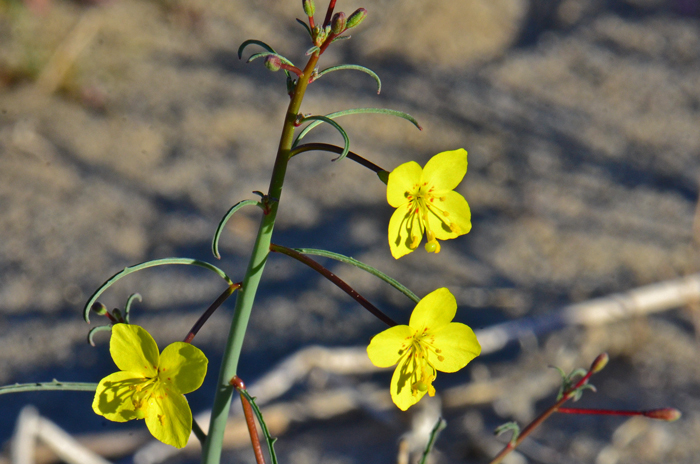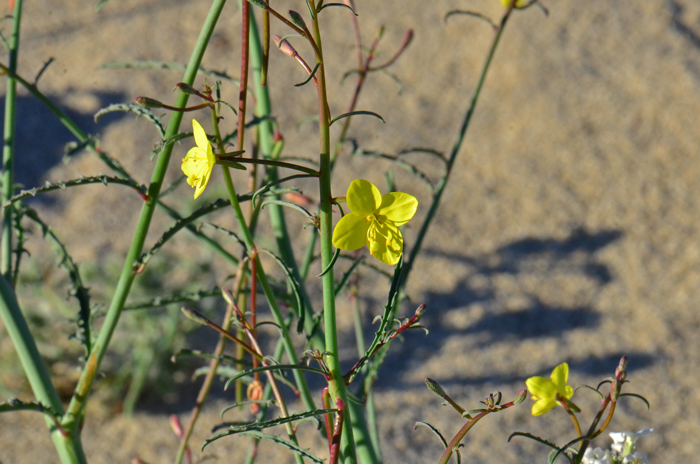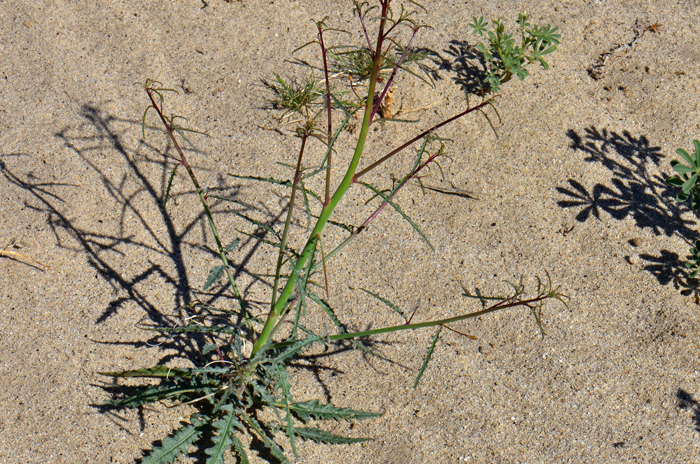Eulobus californicus, California Suncup




Scientific Name: Eulobus (Camissonia) californicus
Common Name: California Suncup
Also Called: California Evening Primrose, California Eveningprimrose, California Primrose
Family: Onagraceae, Evening Primrose Family
Synonyms: (Camissonia californica, Oenothera avita, Oenothera avita subsp. eurekensis, Oenothera californica, Oenothera leptocarpa)
Status: Native
Duration: Annual, perennial;
Size: Up to 3½ feet.
Growth Form: Forb/herb; basal leaves, slender erect stems glaucous or green.
Leaves: Green; basal leaves with reduced upper leaves, small pinnate lobes, leaves narrowly lanceolate or elliptic.
Flower Color: Yellow to yellow-orange; flowers widely spaced; petals to ½ inch, red flecks at base, sepals smaller, greenish, fruit reflexed downward, cylindrical capsule up to 4 inches long.
Flowering Season: February to June, April to June in California.
Elevation: Below 4,500 feet, slightly lower elevations in California (4,000).
Habitat Preferences: Dry slopes, open areas, plains and washes, desert scrub and chaparral; also in coastal ranges in California.
Recorded Range: California Suncup is found in the southwest United States in AZ, CA and NV. In Arizona it is found mostly in the west ½ of the state; southern California and extreme southeast Nevada. It is also native to Baja California and northern Mexico.
North America & US County Distribution Map for Eulobus californicus as Camissonia californica.
U.S. Weed Information: No information available.
Invasive/Noxious Weed Information: No information available.
Wetland Indicator: No information available.
Threatened/Endangered Information: No information available.
Genus Information: In North America, the USDA, Natural Resources Conservation Service includes species of Eulobus under the genus Camissonia. The synonym Camissonia is found in the western half of North America. The Plant List includes 4 scientific plant names of species rank for the genus Eulobus. All data is approximate and subject to taxonomic changes.
In the southwestern United States; Arizona has 22 species of Camassonia, California has 43 species, Nevada has 29 species, New Mexico has 6 species, Texas has 1 species and Utah has 19 species. All data is approximate and subject to taxonomic changes.
Comments: California Suncup is still widely identified as belonging to the genus Camissonia.
In Southwest Desert Flora also see Miniature Suncup, Camissonia micrantha, Yellow Cups, Chylismia (=Camissonia) brevipes Browneyes, Chylismia (=Camissonia) claviformis and Palmer Evening Primrose, Tetrapteron (=Camissonia) palmeri.

